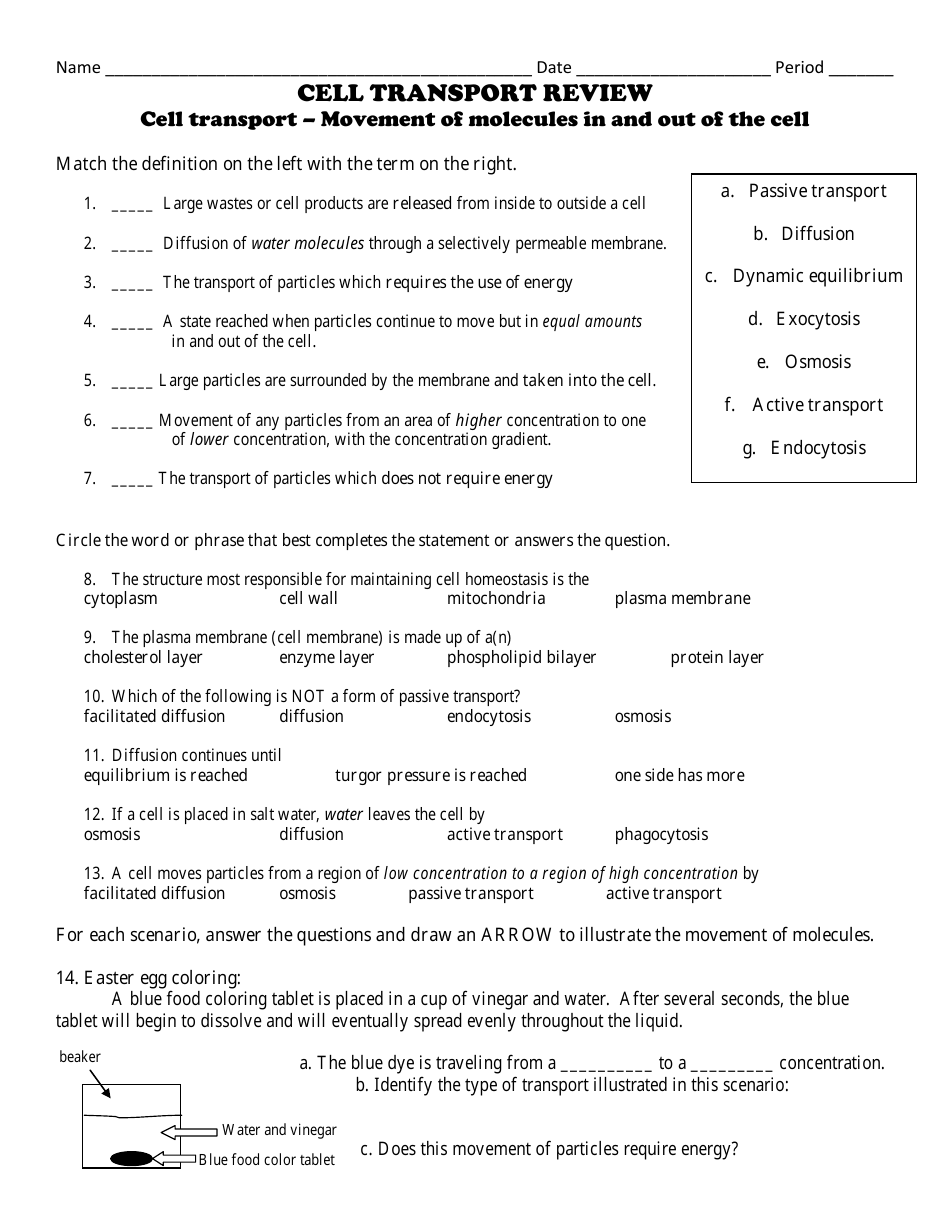Have you ever wondered how tiny cells, the building blocks of life, manage to maintain their internal environment amidst a constant whirlwind of molecules bustling around them? The cell membrane, a thin yet mighty barrier, acts as the gatekeeper, controlling what enters and exits the cell. But how does this intricate dance of transport occur? Let’s embark on a journey into the fascinating world of cell membranes, where we’ll unravel the secrets of transport using a fun and interactive tool: a coloring guide!

Image: martinlindelof.com
This coloring guide isn’t just for kids! It’s a visually engaging way for anyone to understand the complex process of cell membrane transport, from the basic principles to the intricacies of signaling pathways. By coloring the different components of the cell membrane and the molecules traveling across it, you’ll gain a deeper appreciation for the vital role this structure plays in the life of every living organism.
The Cell Membrane: A Dynamic Barrier
Imagine the cell membrane as a bustling city, with checkpoints and gates controlling the flow of traffic. Just like a city has roads, bridges, and tunnels, the cell membrane has various structures and mechanisms to facilitate the movement of molecules. These structures are known as transport proteins, and they are crucial for maintaining the cell’s internal environment, or homeostasis. Just like a good city planner, the cell membrane ensures that the right molecules are transported in the right direction at the right time.
The Phospholipid Bilayer: The Foundation of the Cell Membrane
Let’s begin our coloring journey with the foundation of the cell membrane: the phospholipid bilayer. Imagine a bunch of tiny “heads” and “tails” arranged in two layers, forming a barrier. The “heads” are hydrophilic, meaning they love water and face outwards, interacting with the watery environment inside and outside the cell. The “tails” are hydrophobic, fearing water, and huddle together inside the membrane, forming a barrier. This arrangement creates a selectively permeable membrane, meaning some substances can cross more easily than others.
Transport Proteins: The Gatekeepers of the Cell
Now, let’s color the transport proteins, the gatekeepers of the cell membrane. There are two main types of transport proteins: passive transporters and active transporters. Passive transporters, like a sliding door, allow molecules to move across the membrane without requiring energy. Active transporters, like a revolving door, require energy to move molecules against their concentration gradient, from a low concentration area to a high concentration area.

Image: martindxmguide.blogspot.com
Passive Transport: The Flow of Nature
Let’s color the passive transporters with shades of green. They come in various forms, each mediating the transport of specific molecules. The simplest type is diffusion, where molecules move from an area of high concentration to an area of low concentration, like the scent of a freshly baked cake spreading through a room. Facilitated diffusion, another type of passive transport, uses transport proteins to speed up the movement of molecules that might otherwise struggle to cross the membrane.
Active Transport: Pushing Against the Tide
Now, let’s color the active transporters with shades of red. These proteins are powerhouses, using energy from ATP, the cell’s energy currency, to move molecules against their concentration gradient. Imagine a pump working tirelessly to move water uphill. Similarly, active transporters move certain molecules like ions and nutrients into the cell, even when their concentration inside is already higher.
Endocytosis and Exocytosis: The Bulk Transport
Let’s add a touch of blue and yellow to highlight another fascinating aspect of cell membrane transport: endocytosis and exocytosis. These are like the loading and unloading docks of the cell, allowing large molecules and particles to enter and exit the cell. In endocytosis, the cell membrane engulfs a particle or molecule, forming a vesicle. In exocytosis, the vesicle fuses with the cell membrane, releasing its contents outside the cell.
Real-World Applications of Cell Membrane Transport
The intricate mechanisms of cell membrane transport are not just fascinating concepts; they have profound implications for our health and well-being. Many diseases, from diabetes to cancer, are linked to disruptions in cell membrane transport. For example, certain drugs that target cancer cells work by disrupting the transport of nutrients, preventing the cancer cells from growing and dividing. Studying cell membrane transport is essential for developing new treatments for these diseases.
Cell Membrane And Transport Coloring Answer Key
Beyond the Coloring Book: Exploring the Dynamic World of Cell Membranes
As you color your way through the cell membrane, remember that this isn’t a static picture. It’s a dynamic structure, constantly changing and adapting to the needs of the cell. The cell membrane is a marvel of nature, a complex and elegant barrier that governs the life of every cell.
This coloring guide is just a starting point. There’s a wealth of information waiting to be discovered about the cell membrane and its transport mechanisms. Explore further with online resources, scientific papers, and engaging documentaries. The more we understand the cell membrane, the better equipped we are to address health challenges and unlock the potential of this vital structure in the future.






